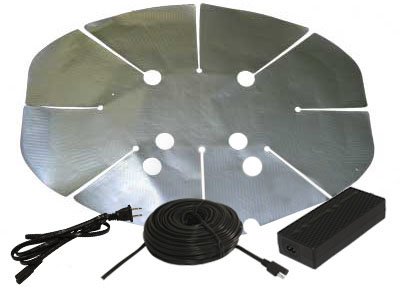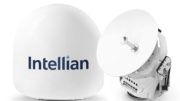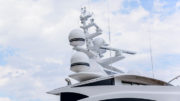Don’t risk life and limb just to get a good TV signal.. If you live in a part of the country where it snows (and here in Novi, MI it snows a lot) you may have reservations about installing satellite service. You might have heard that if snow covers the dish, it doesn’t work.
You may have friends who use a broom to get the snow off the dish. The problem there is over time all that sweeping throws the dish out of alignment. Others rely on substances like WD-40 or Rain-X to keep the snow from sticking. These solutions work some of the time but if there’s enough snow, especially wet snow, it’s going to stick, period.
The best solution is a dish heater. A dish heater is a simple heating element that is designed to stick to your dish, and because the dish itself is made of metal, the whole reflector warms up evenly, melting snow and ice and keeping the signal coming in loud and clear.
Why doesn’t the dish heater block the signal… it’s covering the dish, right?
That question is easy to answer. A lot of people think the big flat part of a satellite dish does all the work. In fact, the reflector (as it is called) is more like an autofocus for the part that does all the work. That’s called the LNB and it’s that part that sticks out front. The reflector takes all the signals and points them toward the LNB. By using a large reflector you get a stronger signal than you would get by just pointing the LNB toward the sky.
So really the reflector isn’t much more than a dumb piece of metal. It’s a precision-made dumb piece of metal, but really, anything that reflects a signal will do a good job. The dish heater sticks closely to the reflector and doesn’t change its shape. It’s made of metal, too, and it does just as good of a job reflecting those signals at the LNB.
If you’re putting up a dish from scratch, the holes in the center of the dish heater allow you to put it on the back, which makes things even better.
Is a dish heater energy efficient?
Well, as energy efficient as a big heater on your roof is going to be, anyway. A dish heater uses a low-voltage power supply and turns on automatically only when it is needed. It turns off when the dish is warm enough to melt snow by itself. The heater’s 24-volt power supply (which should be placed indoors) and uses a little more energy than a 100-watt incandescent bulb. Of course, like any electrical appliance proper grounding is essential. If there is a short circuit the heater should trip the circuit breaker or fuse to which it’s connected, and the heat it generates should be no more than the temperature of your roof on a summer day, so it’s not likely to cause a fire.
Is there a downside to a dish heater?
If there’s any downside at all, it’s the cost to buy one. A good dish heater will cost over $100, but for that you get a quality product that is designed to be safe and effective. Dish heater technology is mature, so the heater you get today should provide years of service with no problems. The LNB will probably wear out before the heater does.
Is a dish heater reusable?
The heater sticks to the reflector with heavy duty adhesive. That means you can’t reuse it or attach it to a new reflector. However, since there are no plans for changes to the current dish designs from DIRECTV or DISH, you should be safe for quite a while. The only electronic component on a dish is the LNB. That means unless you’ve damaged the reflector itself (for example by hail or flying debris) you won’t have to replace anything for a very long time.
What dish heater should you buy?
Since US satellite dish technology is so mature, there really is only one option for satellite dish heaters. Perfect Vision’s universal dish heater gives you what you need in one package that will work with practically any dish used today.
Here’s a video that shows proper installation of a dish heater. I did it several years ago, but it’s still the same procedure. Take a look!





